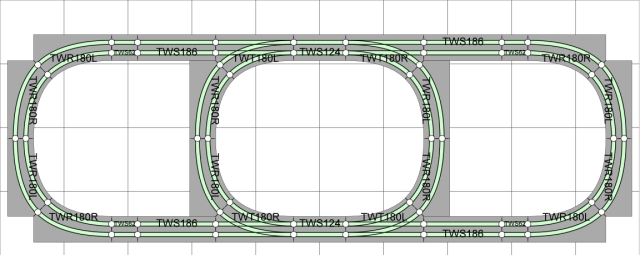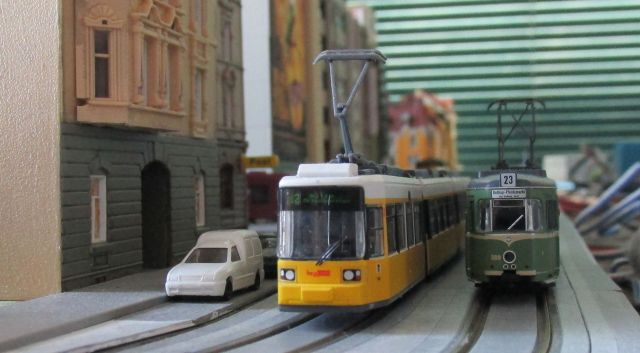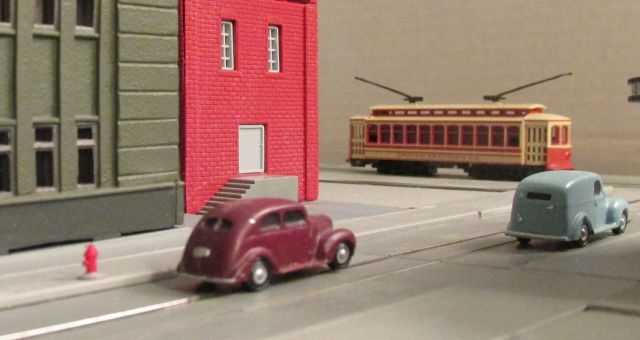The origins of my Tomytec / Unitram Euro layout rest on several trips to Europe and an appreciation of the architecture and history of Europe. After those trips I began accumulating kits, structures and vehicles that would go into a new layout.
My layout represents a place where trams still run on narrow streets. Where bulb stops come out to the tracks on those narrow streets. Where barrier free stops allow families with baby carriages and the users of wheelchairs to board low floor trams.

When Tomytec announced their Berlin and Munich GT6N trams in September 2017 I placed a reservation with a Japanese dealer. Some time after that I came across an HO layout which was the inspiration for my Euro tram layout.
I use the Tomytec GT6N low floor trams and Kato Unitram tram track to create my layout. The Japanese road markings are sanded off the Unitram track and I created block bases of balsa and styrene rather than the Unitram street plates so I could create narrow streets, bulb tram stops, parking bays (to display model cars), tram only sections and intersection sidewalk bulbs that are typical of the environment trams are found in Europe.

My layout is on a 30 x 60 inch table (762 x 1524mm) although the track plan actually is closer to 19.5 inches wide.
There is one Kato power pack for each track with generally more than one feeder per loop. This can be accomplished with a Kato 24-827 3 Way Extension Cord. Facing turnouts are power routing and trailing turnouts are spring switches.
Buildings include those by Pola, Kibri, Faller, Model Power, Kato and Tomix. Buildings at the central stop are more modern while the buildings on the ends are more traditional European.

I have long liked running articulated trams on Kato Unitram. Articulated trams with their multiple power pickups and longer axle centers are more reliable than other tram designs Single truck trams with single power pickups can be prone to stalling on turnouts and crossovers as the truck center is often the same as the track gauge.

Scenes like a Pola apartment building with a carriageway entrance leading to a inner courtyard (very much like a Milan palazzo) and wraps on buildings instead of on trams complete my Euro Tram Layout.






















